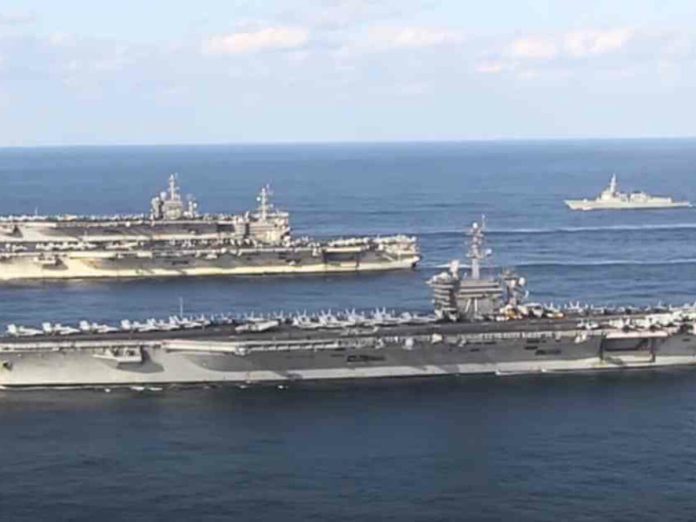- Unprecedented increase in naval power to the region is intended as a signal to Washington’s allies and rivals, especially Beijing, analysts said
- Washington wants to reassure its partners that it remains committed to Indo-Pacific, despite conflicts in Ukraine and the Middle East
The USS George Washington was the first nuclear-powered aircraft carrier to be deployed to Japan, where it served from 2008-15 before it was relieved by the Ronald Reagan for the midlife refuel of its two reactors, as well as repairs, upgrades and modernisation.
In addition to the USS Ronald Reagan, the USS Carl Vinson and USS Theodore Roosevelt were stationed in Guam and Hawaii, respectively on Monday and are expected to stay in the western Pacific until April and July.
Last month, the Theodore Roosevelt and Carl Vinson strike groups took part in a Multi-Large Deck Event with Japan in the Philippine Sea that included enhanced maritime communication operations, air warfare operations, and cross-deck flight operations.
According to the US Navy 7th Fleet, the exercise was intended “to strengthen maritime integrated-at-sea operations and combat readiness”.
“We are more capable when we work together to address shared maritime security challenges,” said Rear Admiral Christopher Alexander, commander of USS Theodore Roosevelt’s Carrier Strike Group Nine.
“Being able to consistently conduct complex operations such as this demonstrates the inherent flexibility of the US Navy to operate whenever and wherever we choose, giving our nation and allies flexible options for deterrence and defence,” he said.
Also in January, the USS Carl Vinson conducted naval drills with South Korea and Japan in the East China Sea, following North Korea’s firing of an intermediate-range ballistic missile.
The trilateral exercises consisted of joint sailing, advanced maritime communication operations, maritime interdiction operations training, air combat drills, staff exchanges, and integration.
“Aircraft carriers are one of the most visible assets in our military. Deploying multiple carriers to a region sends a very clear signal to adversaries,” said Brian Hart, a fellow with the China Power Project at Washington-based think tank the Centre for Strategic and International Studies.
“Given the war in Ukraine, the conflict in the Middle East, and the Houthi attacks in the Red Sea, the US military wants to signal that it can handle those situations while remaining focused on the priority theatre, which is the Indo-Pacific.”
Benjamin Barton, associate professor at the University of Nottingham’s Malaysia campus, said the deployment was intended to signal Washington’s focus on the Indo-Pacific, despite the conflicts in Europe and the Middle East.
“It would seem that there a few reasons at stake: the first is clearly to send a strong signal to allied – of reassurance – and rival – of deterrence – powers alike in the Indo-Pacific,” Barton said.
“[It is also] to state that although US foreign policy is currently consumed by two strategic conflicts taking place outside Asia – Russian aggression in Ukraine, the situation in Gaza – the Indo-Pacific is still very much at the forefront of its strategic concerns.”
Barton added that “containing China within the region remains a top priority, even if there’s been a warming of ties bilaterally”.


